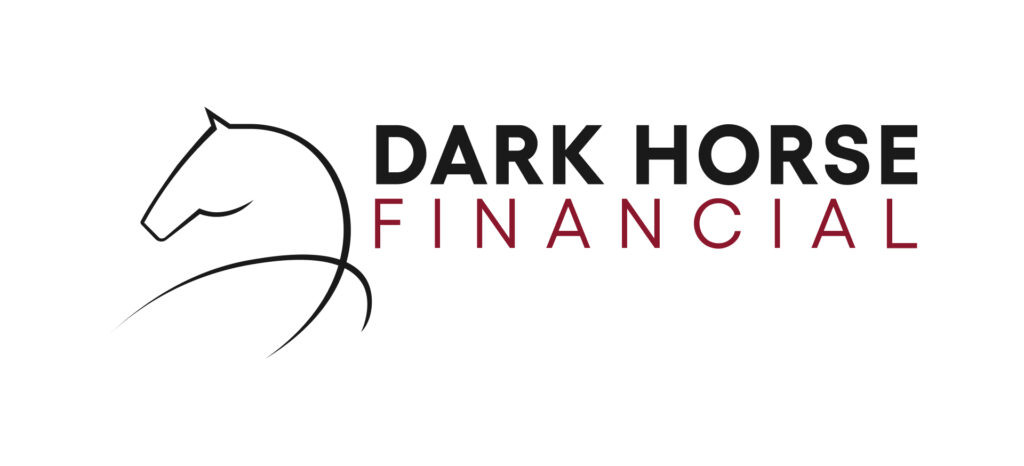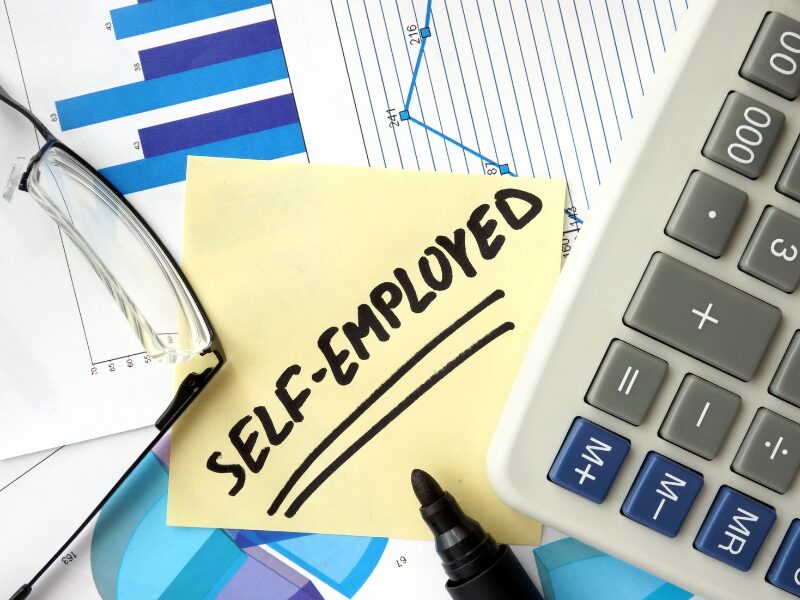Key Takeaways
- Lenders require specific documentation to verify self-employed income that differs from what’s required for regular income.
- Full-doc loans require comprehensive evidence like business financials, Notices of Assessment, and savings, credit card, and bank statements.
- Low-doc loans accept BAS and accountant letters
- Income consistency and sustainability over at least two years are critical factors in lender assessments.
- Fluctuating income can be averaged or assessed conservatively based on the lower income year at some lenders and more generously than others.
- A short business history and excessive tax deductions can negatively affect loan approval chances at some banks.
- Industry risk profiles will also impact lender willingness to approve self-employed mortgage applications.
- Engaging a specialised mortgage broker like Dark Horse Financial and an accountant improves the chances of a successful loan application.
A significant number of Australians operate as self-employed, either as sole traders, contractors, or small business owners. While self-employment offers autonomy and flexibility, it often complicates the home loan application process, especially when it comes to proving income. Lenders require income verification to assess risk and ensure loan serviceability. As a result, understanding how lenders assess income for self-employed applicants is essential to successfully secure a mortgage.
This article’s purpose is to provide an outline of self-employed income assessment in Australia for home loans, including document requirements, lender expectations, and common pitfalls that can result in loan rejection.
The Basics of Self-Employed Mortgage Applications
Applying for a home loan as a self-employed borrower is different from a standard PAYG applicant. With no regular payslips to rely on, lenders place greater scrutiny on business financials and other supporting documents to verify income is sufficient to service a home loan.
Why is income verification important?
Income verification is central to lender risk assessment. It helps determine:
- Whether you can afford the loan repayments
- The stability of your business income
- The likelihood of income continuing into the future
For self-employed borrowers, income is often variable and influenced by business performance, market conditions, and seasonal factors. Lenders, therefore, require more detailed documentation to assess this complexity.
What Documents do Self-Employed Borrowers Need For a Home Loan?
Self-employed applicants typically fall into one of two categories when applying for a mortgage: full-doc or low-doc loans. Each has its own set of income verification requirements.
Full-Doc Self-Employed Loans
These loans require comprehensive financial documentation and offer the most competitive interest rates. Most mainstream lenders and banks will require:
- Business financials – including profit and loss statements and balance sheets for the last two financial years
- Notice of Assessment (NOA) from the ATO
- Bank statements – generally from the past 3–6 months
- Credit card and savings account statements – to verify liquidity and financial habits
These documents help lenders build a complete picture of your financial health and determine your ability to service a loan.
Low-Doc Self-Employed Loans
Low-doc loans are tailored for applicants who cannot provide full financial documentation, perhaps due to recent business activity or non-standard accounting. While these loans offer more flexibility, they generally come with higher interest rates and more conservative lending terms.
Common documents accepted for low-doc applications include:
- Business Activity Statements (BAS) – typically the last two quarters
- Accountant’s letter – confirming income and business viability (though increasingly difficult to obtain due to professional liability concerns)
Low-doc loans may also come with loan-to-value ratio (LVR) caps.

How Do Lenders Assess Self-Employed Income in Australia?
How is fluctuating income assessed for mortgage approval? The process of lender income verification in Australia involves analysing both the quantity and quality of your income. It’s important to note that not all lenders will be as thorough in their scrutiny as others. Here’s a closer look at what lenders are typically evaluating:
1. Income Consistency Over Time
Lenders prefer to see stable or increasing income over the past two years. If your earnings fluctuate, they may average your income across two financial years or take the lower year if the volatility is too high. Selecting the right lender, whose policy allows for the best interpretation of your situation is critical to a good outcome.
2. Business Viability
Lenders examine your business’s profit margins to ensure your business is healthy and likely to remain operational. Poorly performing businesses, declining turnover, or high debts can be red flags to many lenders.
3. Add-backs and Non-Cash Expenses
Some lenders will allow “add-backs” – legitimate business expenses that can be added back to net profit to reflect true serviceability. These may include:
- One-off expenses
- Depreciation
- Interest on business loans
- Owner’s salary
A good broker, experienced with lending for business owners, can help to identify and justify these add-backs in your financials to improve your servicing.
4. Industry Risk Profile
Certain industries are considered higher risk than others. For example, seasonal businesses, hospitality, and construction may be subject to more rigorous assessment or tighter lending criteria at some lenders due to cash flow volatility.
5. Income Documentation
When verifying income, lenders prioritise official, verifiable documents. In the full-doc context, accountant-prepared financials and notices of assessment are preferred. In low-doc cases, reliance on BAS and accountant letters is greater, though these are viewed as less comprehensive.
What Income is Considered Reliable by Lenders for Self-Employed Loans?
Lenders are looking for income that is:
- Consistent – stable across multiple periods
- Documented – supported by official records
- Sustainable – likely to continue for the foreseeable future
- Sufficient – adequate to meet the loan repayment, along with other living expenses

Common Reasons Self-Employed Income is Rejected by Lenders
Understanding common reasons self-employed income is rejected by lenders can help you avoid costly mistakes. Here are a few:
1. Incomplete Documentation
Missing or outdated financials can halt your application. Ensure all requested paperwork is current.
2. Inconsistent Income Trends
Large fluctuations, declining revenue, or seasonal gaps can raise red flags. Lenders want to see evidence of sustainability and stability.
3. Short Business History
Many lenders require at least 1–2 years of self-employment history. Less than 12 months may result in an automatic decline, depending on the lender.
4. Industry Risk or Poor Credit History
Lenders consider the nature of your business and your personal credit score. Adverse credit events, such as defaults or late payments, can impact approval chances.
Tips for Strengthening a Self-Employed Mortgage Application
- Engage a mortgage broker like Dark Horse Financial who understands self-employed lending
- Prepare early – allow time to collect and update your financials
- Maintain clean bank statements – avoid direct debit dishonours, gambling transactions and payments to debt collectors.
- Keep your accountant involved – they can be a great assistance for producing required documents quickly.
More Questions
What financials do lenders request from self-employed applicants?
To fully understand what income proof is needed for self-employed home loan approval, here’s a checklist of commonly requested documents for both loan types.
Full-Doc Applicants:
- Business financial statements (P&L, balance sheet)
- Notices of Assessment from the ATO
- Personal and business bank statements (3–6 months)
- Credit card and savings account statements
Low-Doc Applicants:
- ABN and GST registration details
- Last 2 BAS statements
- Letter from a registered accountant (if possible)
Can I use BAS or bank statements instead of tax returns?
Yes, you can use BAS for low-doc loans. Bank statements can be used for full-doc loans.
What income is considered reliable by lenders for self-employed loans?
Reliable income is consistent, documented over multiple years, and considered likely to continue. Lenders prefer stable or growing profits, with clear documentation and minimal unusual expenses.
Final Thoughts
Securing a home loan as a self-employed borrower can be a simple process with the right preparation. By understanding how lenders assess self-employed income and preparing the right documentation, you can greatly improve your chances of approval. Presenting a clear, consistent, and well-supported financial profile is key.
We Streamline the Process for Self-Employed Borrowers
If you’re self-employed and unsure of how to proceed with a home loan application, contact our team at Dark Horse Financial. We’ll simplify the process for you, ensuring you can secure the home of your dreams without hassle. We’ll also help you secure the best rates and terms for your situation.
Disclaimer: Loans and the benefits of loan products are available to approved applicants only. Information on this page is general in nature, it does not take into account your personal situation. This information is not intended to replace professional advice and should not be relied upon for any reason. You should always seek professional advice for finance, tax and accounting matters before making a decision or taking any action.




